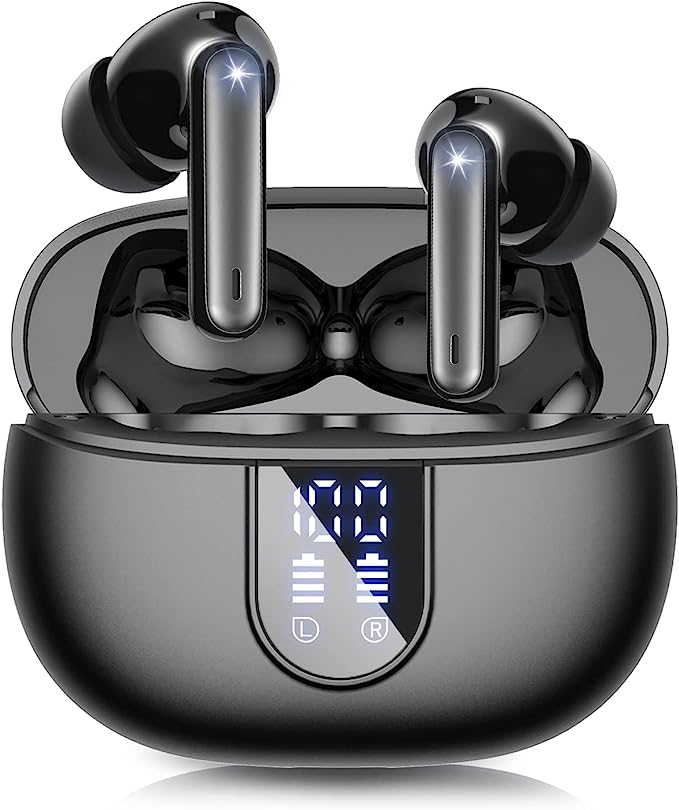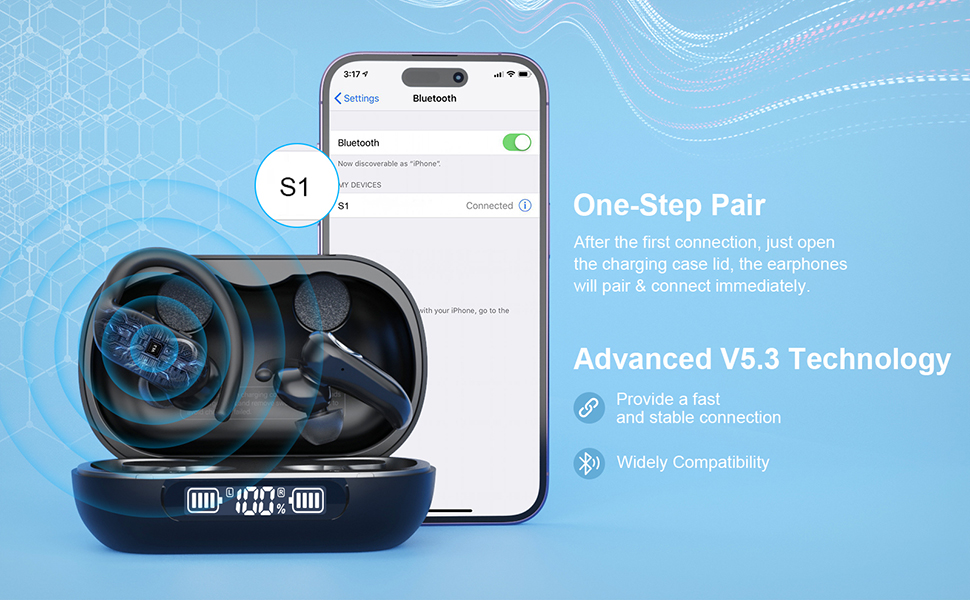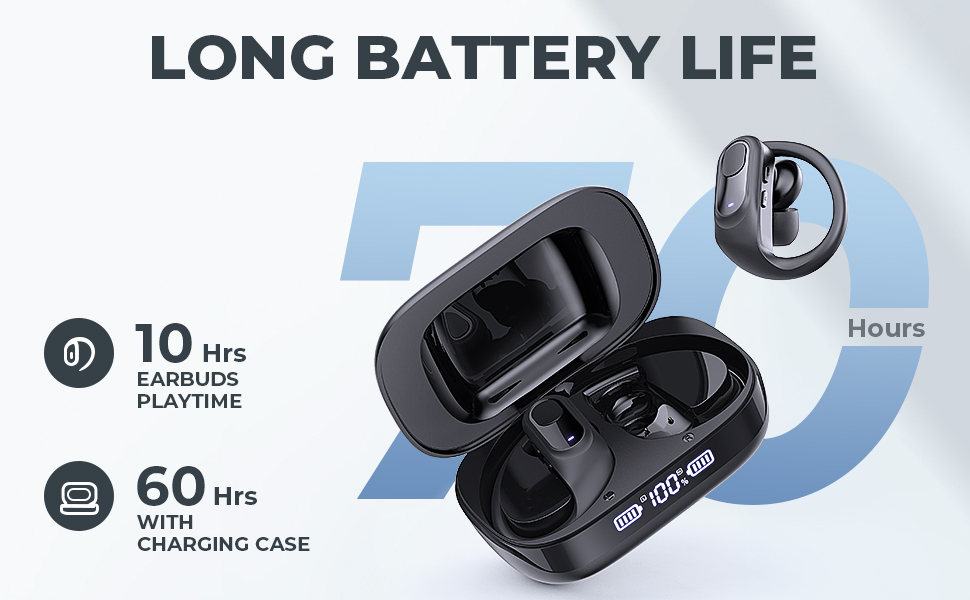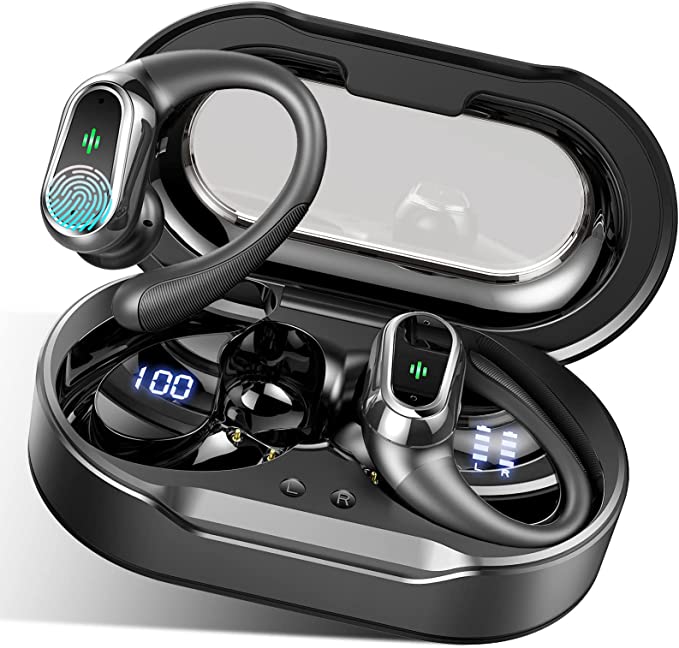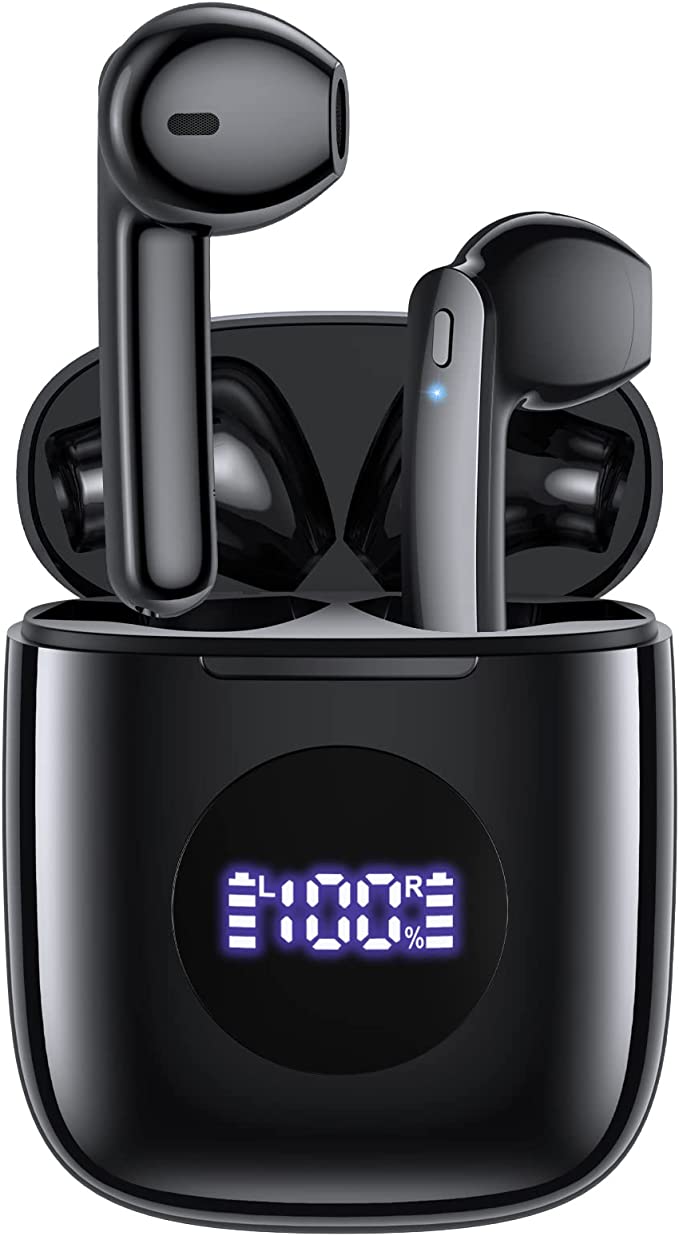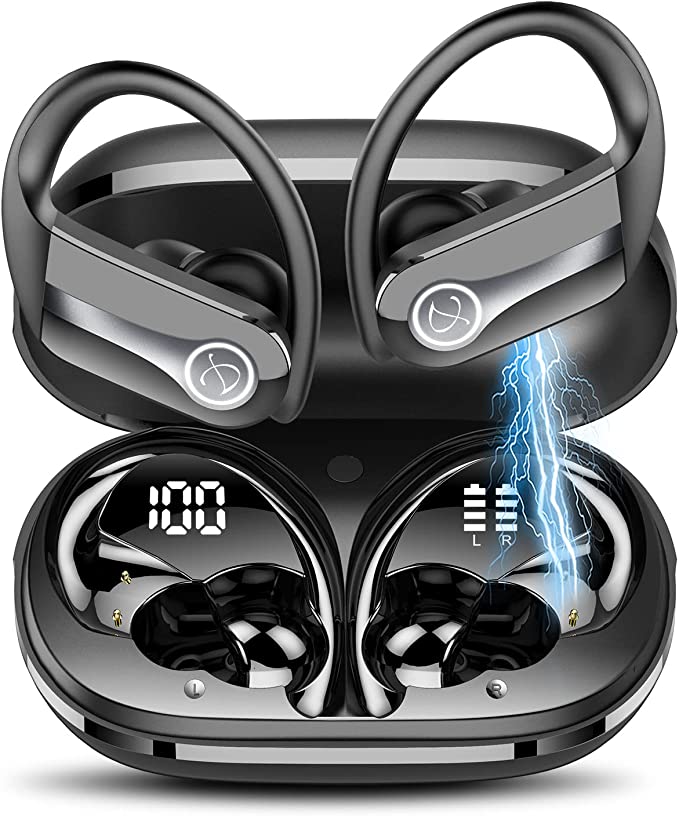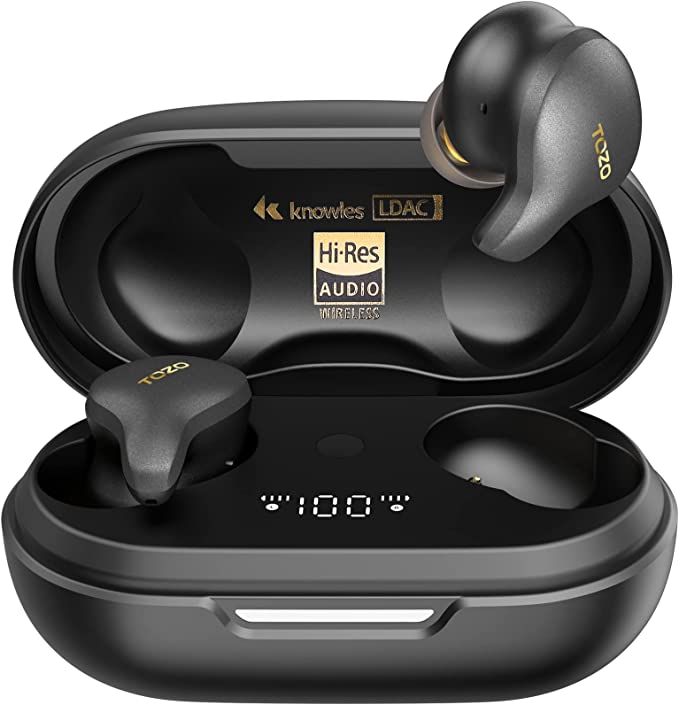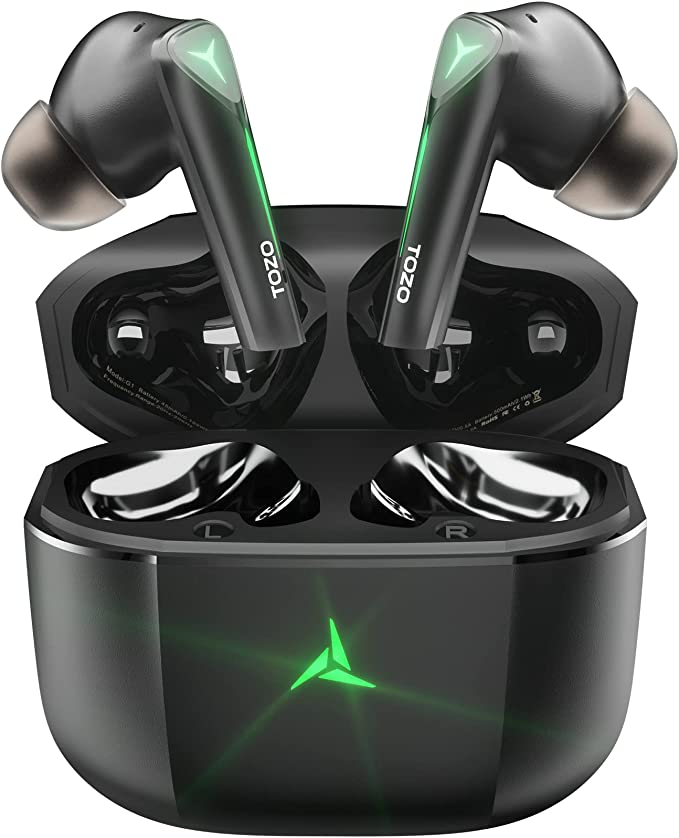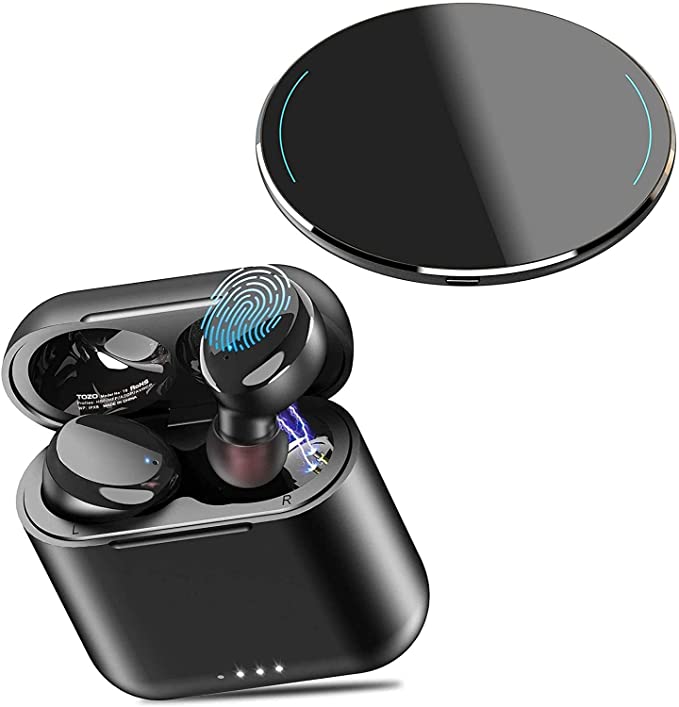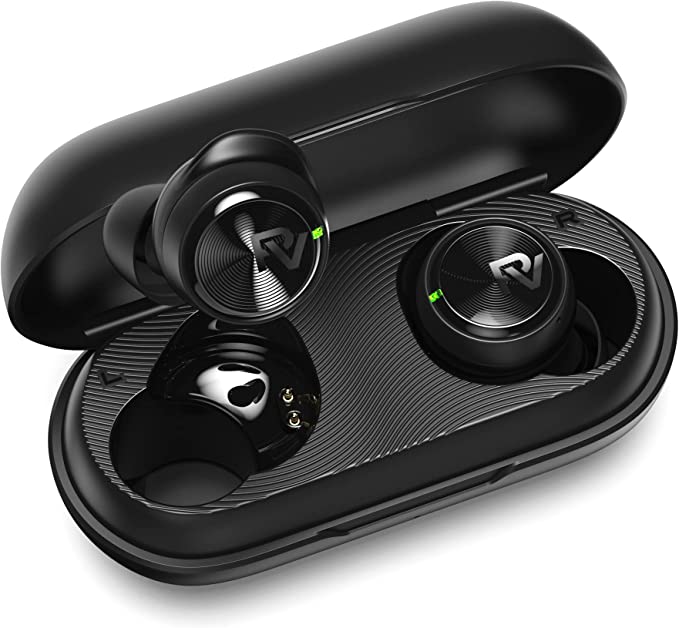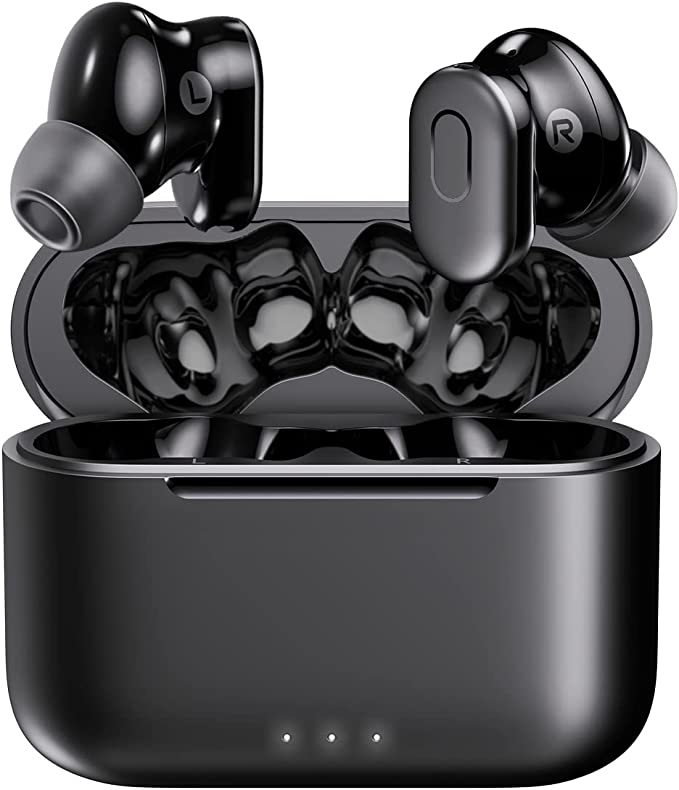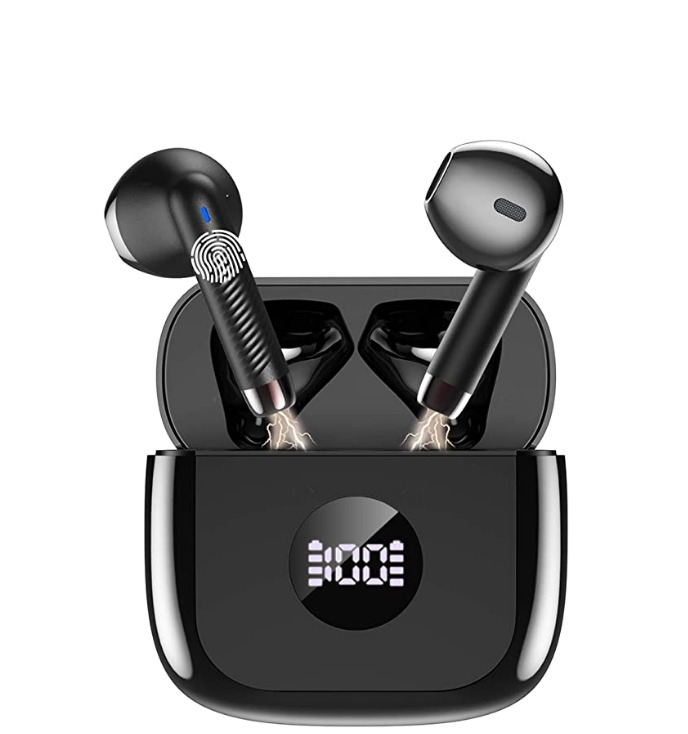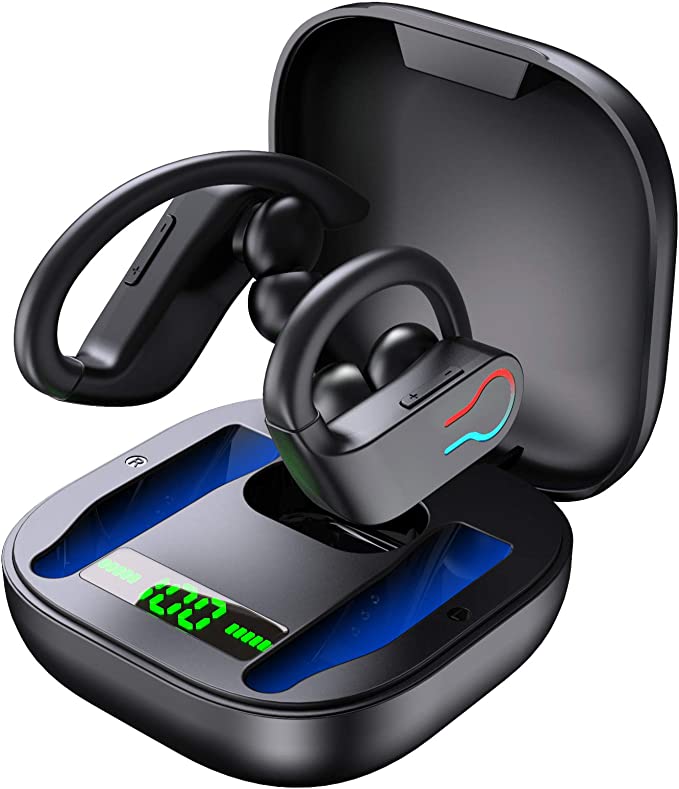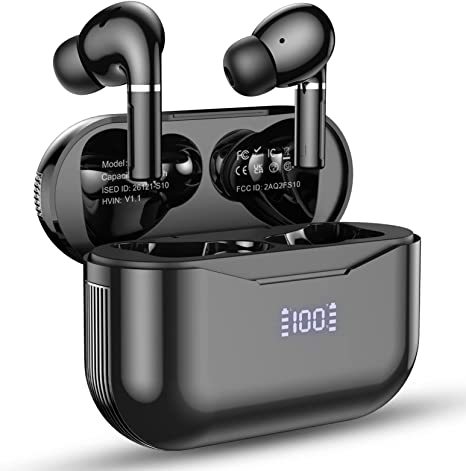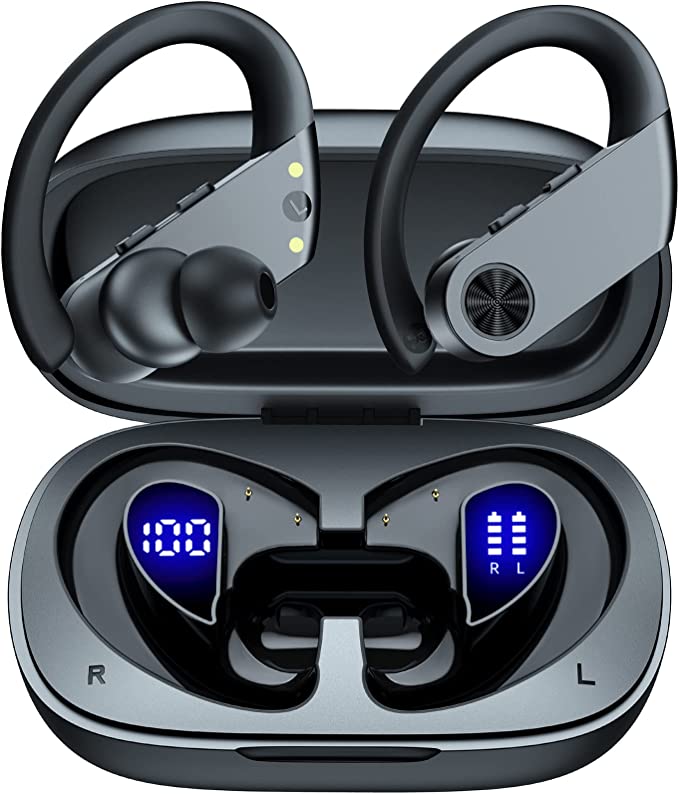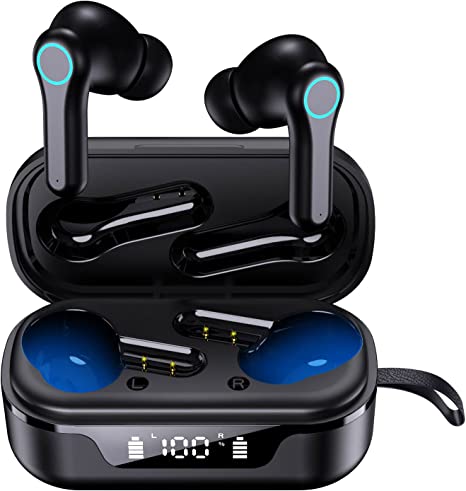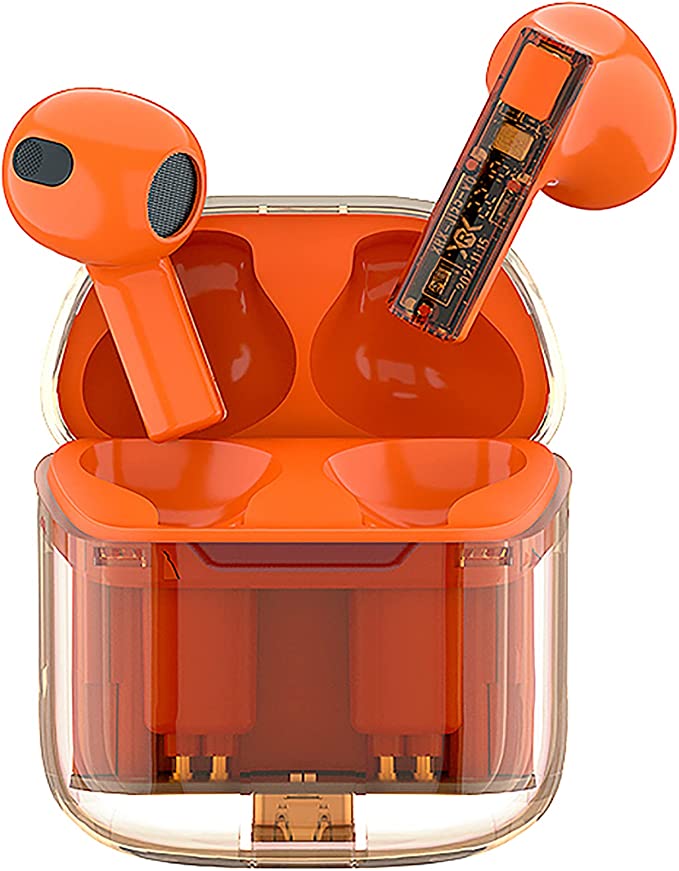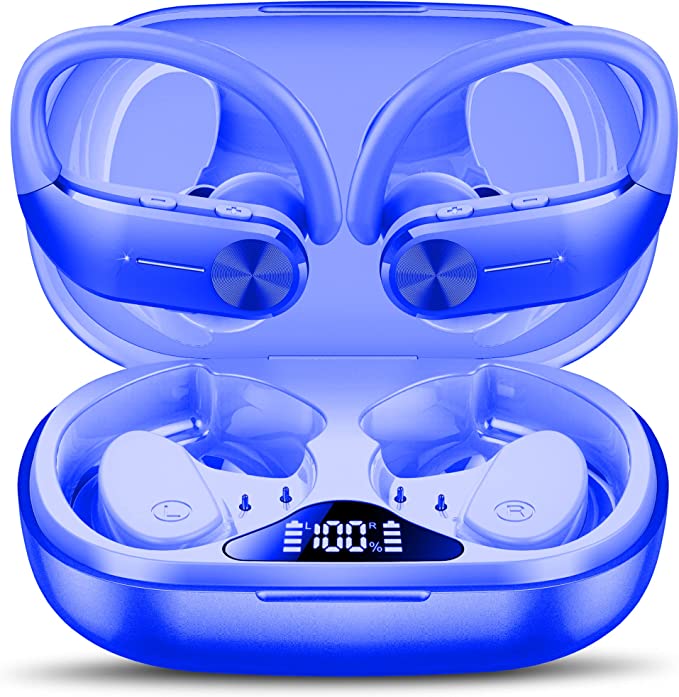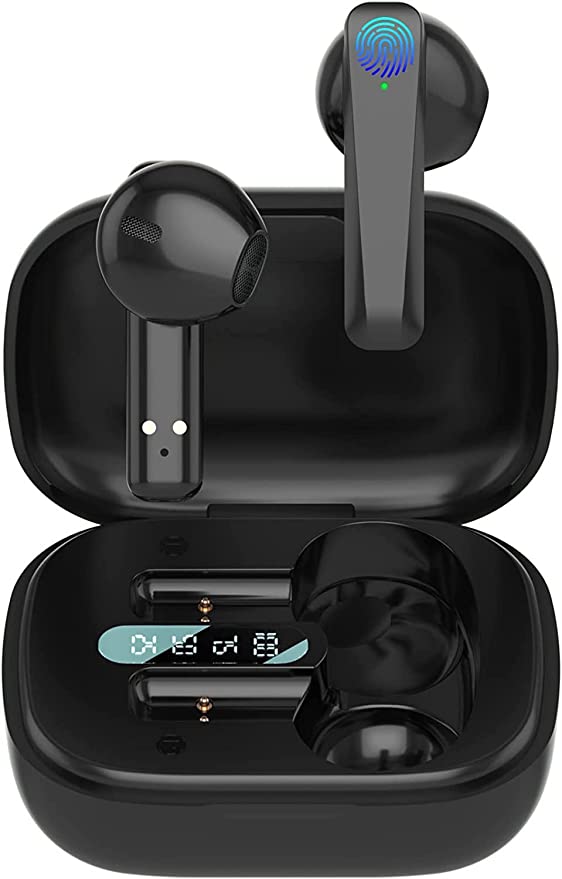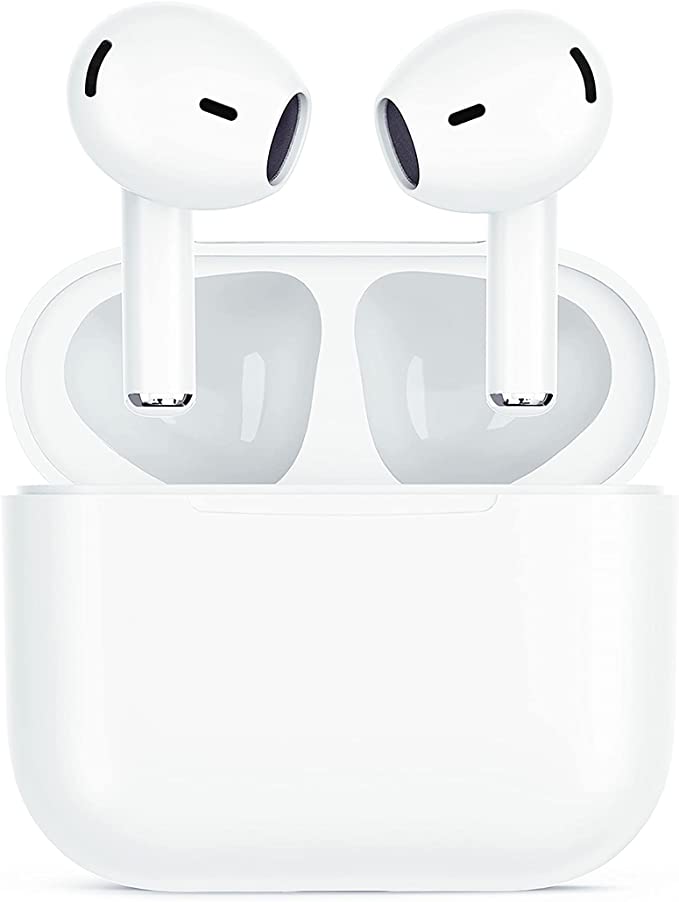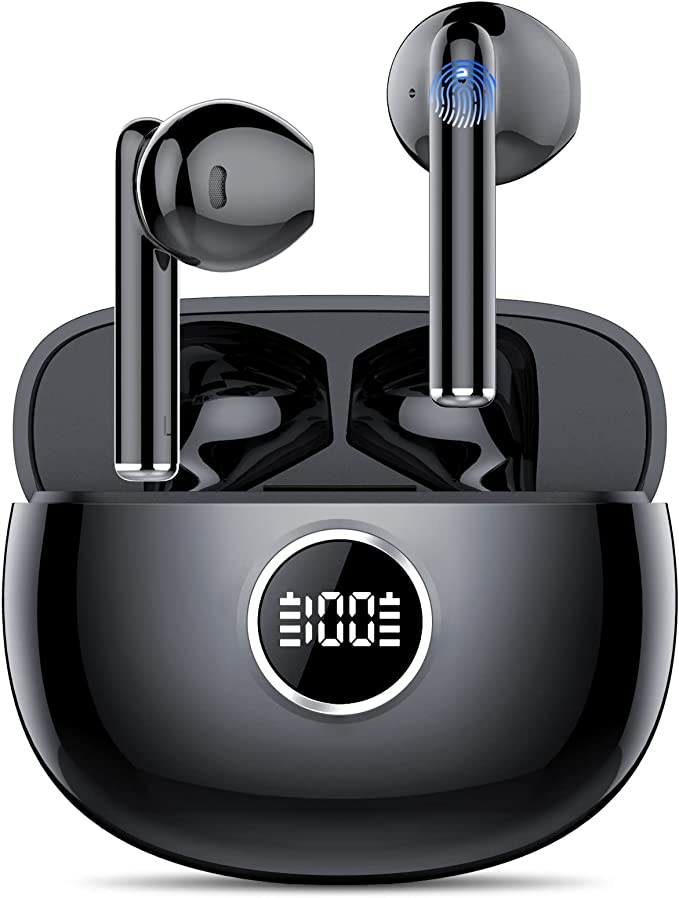FBJJ VV-q63-6-us Wireless Earbuds: Understanding the Tech Behind Sport-Focused Audio
Update on May 15, 2025, 4:56 a.m.
In our bustling, ever-connected world, the ability to curate our personal soundscape has become less a luxury and more a fundamental desire. We crave music that moves with us, podcasts that enlighten our commutes, and the focused silence that allows us to dive deep into our workouts. At the heart of this personal audio revolution are devices like modern sport wireless earbuds, compact marvels of engineering. While a specific model like the “FBJJ VV-q63-6-us Wireless Earbuds” (currently noted as unavailable) might list an impressive array of features – from Bluetooth 5.3 and extended playtime to noise cancellation and a sport-centric design – our journey today is to look beyond any single product. Instead, we’ll use such listed capabilities as our guide to explore the fascinating, often invisible, science and ingenuity that bring these everyday wonders to life. Prepare to transform your perception of those sleek earpieces from simple accessories into miniature monuments of technological achievement.

The Unseen Tether – Forging Freedom with Wireless Sound
Imagine a world just a few decades ago where being tethered by a wire was the only way to enjoy personal audio on the move. The very idea of high-fidelity sound streaming effortlessly through the air into tiny earpieces would have seemed like science fiction. Yet, here we are. This liberation is largely thanks to technologies like Bluetooth, and when a product description mentions “Bluetooth 5.3 Headphones,” it’s hinting at a sophisticated evolution in this wireless dance.
But what is this Bluetooth, really? Think of it as an incredibly skilled, invisible messenger, diligently carrying your audio from your phone or player to your ears. Its origins are surprisingly intertwined with a bit of Hollywood glamour and wartime necessity: actress Hedy Lamarr’s co-invention of a frequency-hopping spread spectrum system during World War II laid some of the foundational concepts. Fast forward through decades of refinement by the Bluetooth Special Interest Group (SIG), and we arrive at versions like 5.3. This isn’t just an arbitrary number; it signifies a suite of potential enhancements designed to elevate the user experience. For the athlete, this could mean a more steadfast connection as they weave through a park, the music remaining a faithful companion, not a stuttering distraction. Later Bluetooth iterations often focus on improved data transmission efficiency, which can translate to richer audio quality (especially with advanced codecs, the ‘language’ Bluetooth uses to compress and decompress audio) and, crucially, lower energy consumption. This allows those tiny earbud batteries to last longer, keeping your soundtrack going strong. It’s this constant refinement of radio wave communication – the subtle choreography of frequencies and data packets – that grants us the untangled freedom to move, to explore, and to listen, unencumbered.

The Endurance Heartbeat – Powering Your Audio Marathons
An enticing claim like “60H Playtime,” often seen in the descriptions of wireless earbuds including their charging cases, speaks directly to a core human desire: to have our tools ready when we are, without constant demands for attention. The journey to such impressive audio endurance is a story of miniature power plants and relentless chemical innovation.
Cast your mind back to the portable electronics of yesteryear, often burdened by bulky, short-lived nickel-cadmium batteries. The revolution truly began with the advent and commercialization of lithium-ion (Li-ion) battery technology. These aren’t just smaller, lighter batteries; their magic lies in their superior energy density – the ability to pack a much larger electrical charge into a given volume and weight. When you see a tiny earbud, it’s housing a miniature Li-ion cell, a marvel of electrochemical engineering.
But the earbuds themselves only tell half the story of that “60H” figure. The trusty charging case acts as their portable power bank, their personal refueling station. It typically contains a significantly larger Li-ion battery, capable of recharging the earbuds multiple times over before it, too, needs a top-up. So, that “60H” is a symphony of synergy: perhaps 6-10 hours from the earbuds themselves, multiplied by several full charges from their case. This, combined with the power-sipping nature of modern chipsets (like those designed for Bluetooth 5.3), allows you to slip these audio companions into your pocket and largely forget about “battery anxiety.” It’s the science of electrochemistry, materials science, and power management, all working in concert to ensure your personal soundtrack doesn’t die before your motivation does.

Crafting Your Cone of Silence – The Art and Science of Noise Cancellation
Our world is a vibrant, often cacophonous, tapestry of sounds. While this can be exciting, there are times—during a focused workout, a meditative moment, or an important call—when we crave a pocket of peace. This is where the allure of “Noise Cancelling,” a feature listed for many modern earbuds like our exemplar FBJJ model, truly shines. It’s about giving you control over your auditory environment.
There are two primary strategies employed to hush the outside world. The first is Passive Noise Isolation, the unsung hero of sound reduction. This is achieved through the physical design of the earbuds themselves. Think of it like wearing high-quality earmuffs. An “Over-Ear” design, as sometimes mentioned, along with snug-fitting ear tips (often made from silicone or memory foam that conforms to your ear canal), creates a physical barrier that naturally blocks a good portion of ambient sound, particularly higher frequencies.
The real conjuring trick, however, lies in Active Noise Cancellation (ANC). This technology doesn’t just block sound; it actively fights it. Imagine tiny, highly sensitive microphones on the outside of the earbuds, constantly listening to the environmental noise around you – the drone of an airplane engine, the rumble of a train, the chatter of a busy gym. The earbuds’ internal processor analyzes these incoming sound waves and, in a fraction of a second, generates an exact opposite sound wave – a mirror image, or “anti-noise.” When this anti-noise is played through the earbud speakers, it meets the original offending sound wave. Like two perfectly matched ripples in a pond colliding and smoothing the surface, the two sound waves cancel each other out through a principle called destructive interference. The result? A dramatic reduction in perceived background noise, especially constant, low-frequency sounds. This sophisticated dance of acoustics and electronics, whose early practical applications were pioneered for pilots to reduce cockpit noise, now offers a serene escape for anyone seeking focus or just a more immersive listening experience.

Forged for Movement, Shielded from the Elements – Design That Endures
For anyone who leads an active life, sports equipment isn’t just about function; it’s about resilience and a harmonious relationship with the body in motion. When earbuds are described as “Waterproof Wireless Workout Earphones” with “Over-Ear Sport Ear Buds with Earhooks,” it signals a deep consideration for the unique demands of athletic endeavor.
The term “waterproof” in electronics is a serious claim, typically quantified by the Ingress Protection (IP) rating system. This is a standardized international code (like IPX4 or IPX7) that classifies the degree of protection an enclosure provides against the intrusion of foreign objects (like dust) and, crucially for athletes, water. An IPX4 rating, for example, generally means the device can withstand splashes of water from any direction – perfect for fending off sweat or a light rain shower. Higher ratings like IPX7 might indicate protection against temporary immersion. Achieving this involves meticulous engineering: precisely fitted casings, rubberized seals or O-rings at vulnerable points like charging ports or button seams, and sometimes even the application of hydrophobic nano-coatings that actively repel water molecules. This isn’t just about surviving a downpour; it’s about ensuring the longevity of the sensitive electronics within when faced with the corrosive effects of sweat.
Equally important for the “workout earphone” designation is the promise of a secure, stable fit. Here, features like “Earhooks” come into play. These aren’t arbitrary plastic appendages; their design is rooted in ergonomics and biomechanics. The human ear, with its unique curves and cartilage, provides natural anchoring points. Earhooks are designed to loop gently but firmly over the top of the ear, leveraging this anatomy to prevent the earbuds from dislodging during vigorous activities like running, jumping, or circuit training. This not only keeps your music playing but also ensures optimal sound delivery, as a loose earbud can significantly degrade audio quality and the effectiveness of noise cancellation. Beyond stability, well-designed earhooks also help distribute the earbud’s weight more evenly, minimizing pressure points and enhancing comfort for those long workout sessions. It’s a blend of material science (choosing materials that are flexible yet durable, and comfortable against the skin) and an intimate understanding of how the body moves.
The Little Dialogues – Staying Informed and In Control
In our increasingly complex technological landscape, clarity and ease of use are paramount. Even seemingly minor features like a “Dual LED Display,” as listed for some earbud charging cases, play an important role in the overall user experience by fostering an informed interaction with the device.
These aren’t just decorative lights; they are a simple, direct line of communication. Typically, such a display on a charging case serves to provide an at-a-glance status report on the energy reserves within. One set of LEDs, or a numerical percentage, might indicate the remaining charge of the case itself – letting you know if it’s time to plug it into a power source. Other indicators often show the charging status of each individual earbud when they are nestled inside. Are they fully charged and ready for action? Or are they still drawing power? This removes the guesswork, empowering you to confidently grab your earbuds for a run, knowing they won’t die on you a mile in. It’s a small detail, perhaps, but it’s part of a larger design philosophy that values user awareness and control, making the technology feel less like a black box and more like a reliable partner.

The Unfolding Marvel in Your Ears
Our journey through the inner workings of modern sport wireless earbuds reveals a stunning convergence of scientific disciplines. From the intricate dance of radio waves enabling Bluetooth connectivity, to the sophisticated electrochemistry powering our listening marathons; from the acoustic wizardry of noise cancellation that carves out oases of calm, to the material science and ergonomic considerations that allow these devices to withstand the rigors of an active life and sit comfortably in our ears – it’s a testament to relentless human ingenuity.
While we’ve used the listed features of a model like the FBJJ VV-q63-6-us as our guideposts, the true marvel lies in understanding that these technologies are not exclusive to any single product. They represent broad advancements in engineering that benefit us all. Armed with this deeper appreciation, you can now look at any pair of advanced earbuds not just as a gadget, but as a compact symphony of scientific principles, meticulously orchestrated to deliver sound, freedom, and focus to your ears. And that, in itself, is a remarkable feat.




